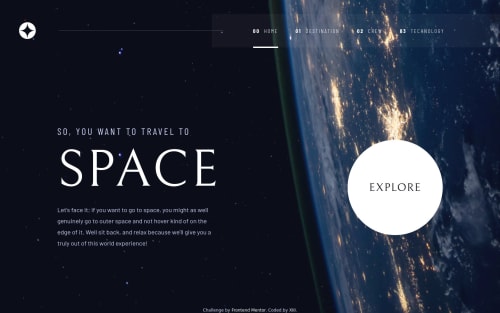Space Tourism website REACT, REACT ROUTERV6, TAILWINDCSS, VITE, Framer

Solution retrospective
Built with
- REACT
- REACT HOOKS
- Tailwindcss
- REACT ROUTER V6.8
- FRAMER MOTION
- VITE
- Mobile-first workflow
- https://jsonbin.io/ for API
You can also swipe left and right on touch devices ^^
Had so much fun taking up this challenge would it be nice if I had made the items from each page as a nested routes to each page? A feedback is much appreciated. Meow ^^,
Please log in to post a comment
Log in with GitHubCommunity feedback
- @diversis
Hello! Looks fine except for some overflow issues and layout shift. To remove overflow on main section change you can simply add css
main {overflow-x:hidden}. Addressing layout shift : better render only content that changes (like text,images and their direct<div>|<motion.div>parents), but layout itself should remain unchanged. This may require wrapping each piece of content you want to animated in one more<div>Marked as helpful
Join our Discord community
Join thousands of Frontend Mentor community members taking the challenges, sharing resources, helping each other, and chatting about all things front-end!
Join our Discord